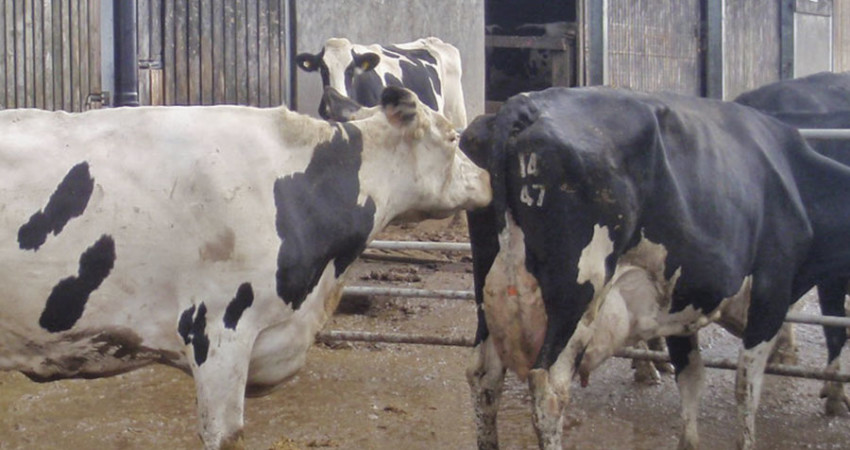

If you are planning to artificially inseminate your cows, you must have an accurate idea of when your cows go in heat. Even if you don’t plan on using AI for breeding, knowing when your cow is in heat can give you a general idea of when her calf is due. Additionally, if you know when a cow cycles, you can monitor her in subsequent months to make sure that she has been successfully bred. If you have a cow that comes back in heat month after month, you should call the vet to figure out why. If many of your cows are returning to heat, you may have a problem with your bull, or you may have a nutritional problem that may need to be addressed.
Depending on the breed of the cow you keep, a heifer can begin cycling as early as six months of age. From that point until she is bred, the cow will experience heat every 18-23 days on a regular cycle. After calving, most cows come back into heat about six to eight weeks after giving birth. From that point until she’s bred back, she should have regular heats.
When cows are in heat, it stirs up their herd mates. The other cows will mill around the cow in heat, smelling her behind and trying to mount her. The surest sign of heat is when a cow stands still and allows other cows to mount her. This phase of heat is called “standing heat,” and this phase determines when you will artificially inseminate your cows. Twelve hours after standing heat, you should schedule your cow to be bred.
Secondary signs of heat are numerous. When a cow is just starting to come into heat or has recently been in heat, you will see other signs. These may include restlessness and agitation, mucus discharge from the vulva, sniffing other cows’ behinds, having muddy flanks or a ruffled tail head. Cows may also stop eating normally during this time. Your normally calm milk cow may become balky and stick her foot in the milk pail.
Many farmers use heat detection devices to keep track of their cows’ cycles. Some farmers use paint or chalk on the cows’ tail heads as a visual aid. When the markings are disturbed, farmers will know that their cows have cycled. Other farmers use rub-off stickers. These devices are glued to the cows’ tail heads, and they work like a scratch-off lottery ticket. They have a gray coating over a brightly colored sticker. When other cows mount the cow in heat, they rub off the gray coating and the bright colors are clearly visible.
Cattlemen should watch their cows twice a day for heat signs. Early morning and late evening are the best times to observe the cows. Farmers should observe the herd for at least five or ten minutes to get an accurate picture of the cows’ status. When a cow is found to be in heat, the farmer should record whether or not she is standing for mounting. If she’s not in standing heat quite yet, the farmer may want to keep an eye on her for the next few hours. Knowing when she was in standing heat and breeding her 12 hours after that point increases the success of artificial insemination.
If you have cows in heat and you have a bull nearby, be very careful about approaching the herd. The bull will be agitated and ready to breed that cow. He may see you as a potential competitor for your cows’ affections, so watch out.
 Contact Jaguza Support
Contact Jaguza Support